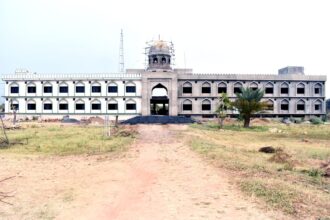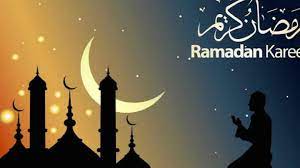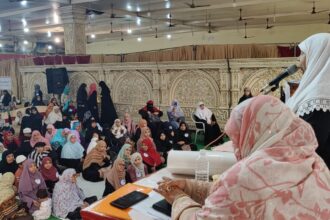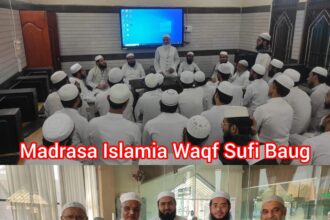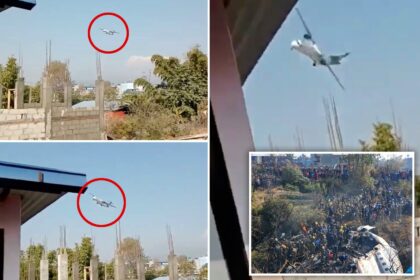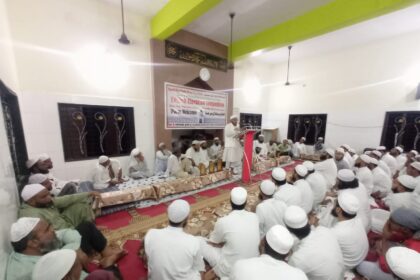By: Mufti Abdur Rauf Qasmi
The writer is an Islamic Scholar and Mufti from Darul Uloom Deoband, currently teaching at Khanqah-e-Nomania, Neral, Mumbai, India

In an era where the world is at our fingertips, having access to the unprecedented amounts of information, it is disheartening to see that myths, misinformation, and false accusations intentionally or unintentionally, continue to surround Islam, Muslims, and Islamic institutions like Darul Uloom Deoband. What is particularly alarming is that these fabrications and misinformation are often endorsed and peddled by government officials, who have a duty to conduct thorough investigations and clarification with no doubt before making any allegations.
A recent incident exemplifying this is the National Commission for Protection of Child Rights’ (NCPCR) calling for an FIR against a world-renowned Islamic institution Darul Uloom Deoband in Uttar Pradesh, allegedly endorsing the ‘Ghazwa-e-Hind’ fatwa. This call not only lacks substantial evidence but also appears to be a cheap attempt at gaining popularity and diverting attention from real issues facing the country.
Despite Darul Uloom Deoband’s unequivocal teachings of peace, its pivotal role in promoting communal harmony, and its significant contribution to India’s freedom and educational advancement, aiming to uplift the nation and to develop India, it is lamentable that the institution was unfairly targeted. Merely citing the presence of Ahadith regarding Ghazwa-e-Hind in Hadith literature should not be a pretext for such biased targeting. It is important to remember that referencing religious scriptures or Hadith literature is a normal practice and should not be misconstrued as a criminal act. Moreover, it’s regrettable to witness government officials stoop to such levels, lacking the integrity to conduct thorough investigations, study, and research before leveling baseless accusations.
Historical and Scholarly Context of the Ahadith of Ghazwa-e-Hind
The Ahadith on Ghazwa-e-Hind, cited by Darul Uloom Deoband in its Fatwa, are a response to a questioner and are mentioned in various books of Hadith such as Musnad Ahmad, Sunan Nasai.
The Hadith reads: “The Prophet of Allah (saws) said, ‘Allah has protected two groups of my Ummah from the hellfire; the group that will invade Al-Hind (the subcontinent) and the group that will be with Isa (Jesus), the son of Mariam (as).’
It was narrated that the blessed companion Abu Hurayrah, the narrator of over 5,000 Ahadith, stated: ‘The Messenger of Allah promised us the conquest of Al-Hind (the subcontinent). If I am able to join it, I will spend on it my wealth and my life. If I am killed, I will be the best of martyrs and if I return, I will be Abu Hurairah, the freed one (protected from Hellfire).”
According to the group of scholars from Darul Uloom Deoband, including Mufti Abul Qasim Nomani, the rector of Darul Uloom Deoband, Mufti Salman Mansurpuri, the Mufti of Darul Uloom Deoband, Maulana Khalid Saifullah Rahmani, and others along with the Jamiat Ulema-e-Hind, a leading body of Muslims in India, the Hadith regarding Ghazwa-e-Hind is subject to scrutiny due to its weak chain of narrators. Despite this, the Hadith has been collectively classified as Hasan, indicating an acceptable level of authenticity. Additionally, they argue that the Hadith is expressed in absolute terms without specifying a particular time frame for its fulfillment. The Islamic scholars have already condemned the people who link it to present India.
The first possibility relates to historical battles in the Indian subcontinent during the early and medieval periods of Islam. These conflicts, exemplified by campaigns led by figures like Muhammad Bin Qasim and Mahmud Ghaznawi, resulted in Muslim domination over the region for an extended period. This interpretation finds support in narrations that mention not only Hindustan but also Sindh. For instance, a Hadith specifically mentions the conquest of Sindh, which occurred under the command of Muhammad Bin Qasim.
- The second possibility is that the term ‘Hind’ mentioned in the Hadith may not specifically refer to present-day India but rather to the broader Indian region of the Prophetic time, including areas like Basrah and its neighboring places, currently in Iraq. This interpretation finds support in statements from some blessed Companions of the Prophet who used to say: “We interpret Hind as Basrah.” Maulana Abu al-Qasim Naumani, the Vice-Chancellor of Darul Uloom Deoband, shared a similar perspective. According to a report by BBC News Urdu on February 24, 2024, he stated that the prophecy of ‘Ghazwa-e-Hind’ mentioned in the Hadith was fulfilled with the invasion of India by Muhammad bin Qasim in 712 AD. He emphasized that this prophecy does not apply to the future, nor does the institution encourage its students in this regard.”
In addition to historical interpretations, scholars also debate the geographical scope of ‘Hind’ mentioned in the Hadith, suggesting broader regions beyond present-day India.
- The third possibility is that the war to which these Ahadith (traditions) refer to have not yet taken place. Instead, it will take place during the period of re-emergence of Isa (Jesus) and Mehdi as mentioned in Islamic traditions. Hence, it’s an end-time prophecy.
Implications and Conclusions
It is essential to understand that in Islam, Eesa or Jesus is revered as a Prophet and the Maseeh (Christ), not as a son of God. The belief in the return of Isa (Jesus) is fundamental in Islamic teachings, supported by the Quran and numerous authentic Ahadith. These scriptures prophesy that ‘Eesa ibn Maryam’ (Jesus son of Mary) will return to Earth before the end-times to liberate the world from the oppressive rule of the evil ‘Dajjal’ (anti-Christ). One interpretation of these texts connects the Ghazwatul Hind with Jesus’ mission after his Second Coming. According to this interpretation, Jesus will lead an army to conquer the western hemisphere upon his return, while another contingent will engage in the east in the so-called ‘Ghazwatul-Hind’ campaign. This eschatological belief suggests that when these events unfold, Muslims will participate in a war alongside the prophet Isa.
This detailed understanding clarifies that attributing the Ahadith regarding Ghazwa-e-Hind to present-day India is entirely incorrect. The first two interpretations of these Hadiths do not allow for any further possibility of war in the current context. The third interpretation, although doubtful, suggests that the signs of the Dooms Day, after which Isa (as) will descend, have not yet appeared. Even if one were to consider the Hadith of ‘Ghazwatul-Hind’ valid, it can only be understood in conjunction with the prophesized end-time events, where the entire world is under the rule of Dajjal and the prophet Jesus emerges to defeat him. Therefore, using Ghazwatul Hind in the contemporary geopolitical discourse appears both absurd and irrelevant, as the conditions described in the prophecy are not currently applicable to ‘Hind.’
Here, we must bear in mind that prophecies and sayings of Prophet Mohammad or any other religions should not be used for political or material gains.
Moreover, how can Darul Uloom Deoband glorify or encourage any form of conflict against India, while it has played such a pivotal role in India’s liberation from British colonial rule! Darul Uloom Deoband has been a beacon of peace and harmony, advocating for communal unity and contributing significantly to India’s education and development. To suggest that Darul Uloom Deoband would endorse conflicts goes against the very principles it has stood for and championed throughout its existence. It would be contradictory to its core values and historical stance to glorify or encourage any form of conflict against India. Darul Uloom Deoband’s alumni and followers, deeply rooted in the fabric of Indian nationalism, have contributed immensely to the nation’s progress. As Maulana Abul Kalam Azad famously stated, “I am proud of being an Indian. I am part of the indivisible unity that is Indian nationality. I am indispensable to this noble edifice and without me, this splendid structure is incomplete. I am an essential element, which has gone to build India. I can never surrender this claim.” These words resonate deeply with the ethos of Darul Uloom Deoband, emphasizing its commitment to the unity, progress, and development of India.
Furthermore, how can Darul Uloom Deoband, an institution deeply rooted in Islamic teachings and Shariah principles, advocate for waging war against India while Islam emphasizes peace and respect for the law of the land where Muslims reside under peace with treaty. This is especially significant in a country like India where Muslims live under the framework of democracy with peace and communal harmony. Shariah law prohibits Muslims from engaging in acts of aggression or violence against the country in which they live, especially through democratic means or treaty. Advocating for war goes against these fundamental principles of Islam and Shariah, therefore how Darul Uloom Deoband could violates the Sharia’a rule.
The NCPCR’s claim, accusing the Madrasa of glorifying “martyrdom in the context of India’s invasion,” is not only baseless but also lacks substantial evidence. Such allegations, without proper investigation and evidence, only serve to create unnecessary tension and target Muslim educational institutions unfairly.
It is important to note that Madrasas, including Darul Uloom Deoband, play a crucial role in providing education and guidance to Muslim students. They are institutions of learning and spirituality, not breeding grounds for extremism as portrayed by the NCPCR’s claim.
It is concerning that instead of addressing real issues such as education, healthcare, and poverty, efforts are being made to target and malign Madrasas, which serve as pillars of education and moral guidance for many.
It is time for authorities to focus on resolving real issues facing the country rather than indulging in baseless allegations and divisive tactics. The NCPCR should retract its statement and focus on its core mandate of protecting child rights, without bias or prejudice against any community.


